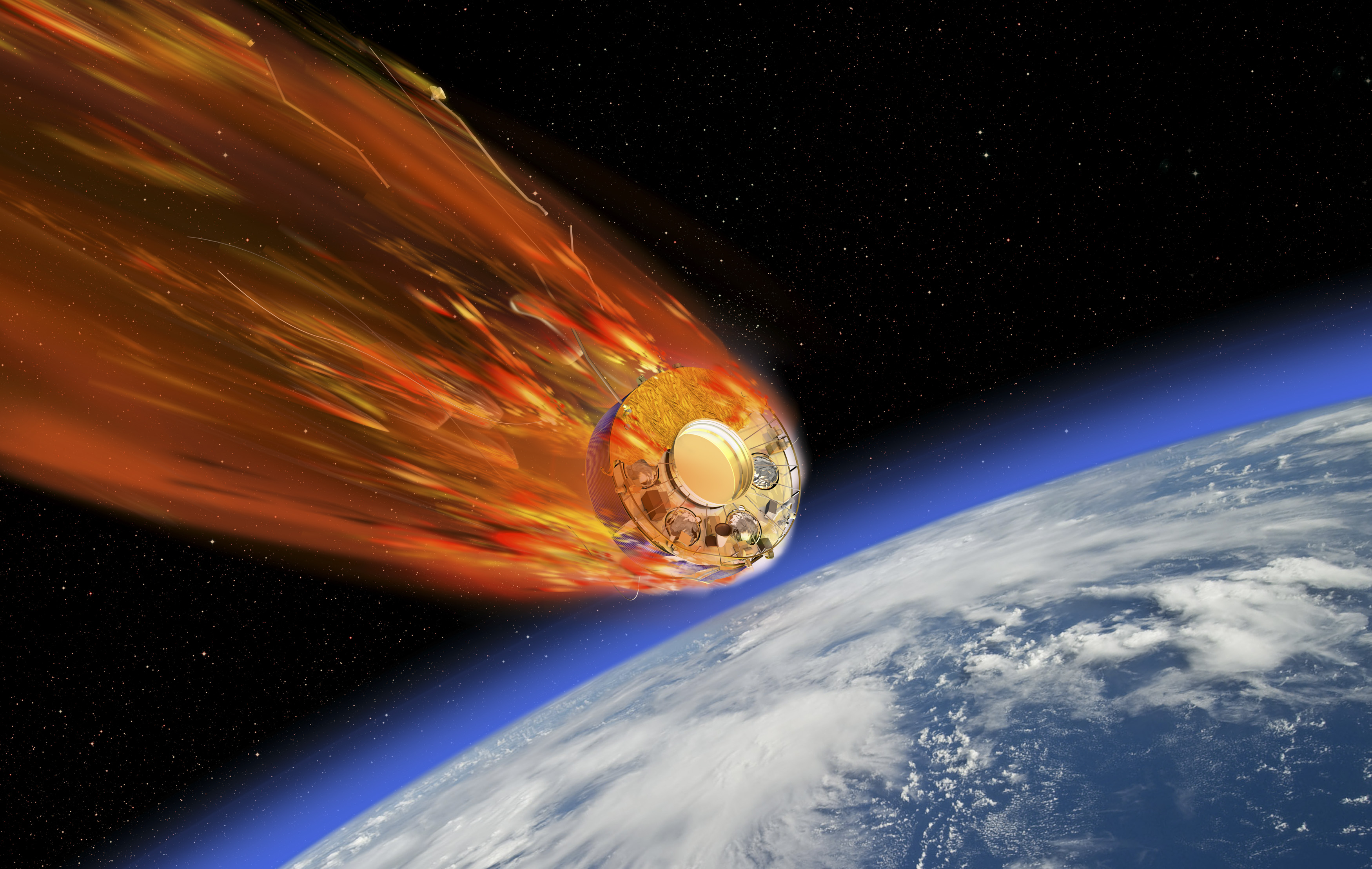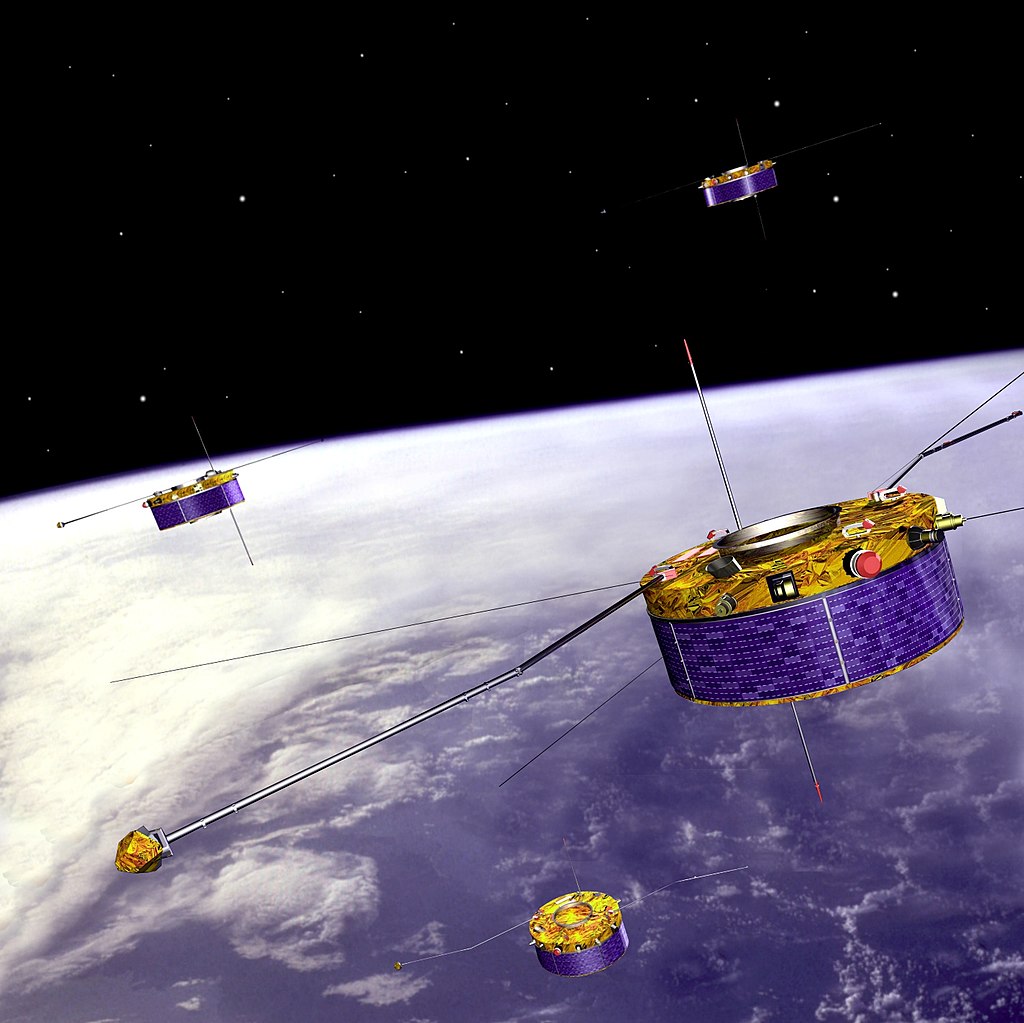Four years after the original Cluster satellites were lost shortly after launch, the four Cluster II satellites successfully embarked on their ambitious science mission – the first two on 16 July and the latter pair on 9 August 2000. On 8 September 2024, well beyond the mission's expected lifetime of 2 years, the first of these pioneering spacecrafts will re-enter Earth's atmosphere over the South Pacific Ocean.
For over 24 years, the European Space Agency's (ESA) Cluster II mission has been helping scientists study the mysteries of the Earth's powerful magnetic shield: the magnetosphere. This protective bubble protects our planet from the stream of charged particles emitted by the Sun known as the solar wind.
The interaction between the solar wind and the magnetosphere is called 'space weather'. A familiar consequence of space weather is the awe-inspiring aurora phenomena in the Earth's polar regions, including the aurora borealis or “Northern Lights" which were observed unusually far south earlier this year.
Although space weather generally causes no harm to Earth, studying related processes is important because severe space weather events can disrupt technologies including satellites, communications, and electricity transmission.
Over its long lifetime, Cluster has played a pivotal role in bettering understanding of space weather trends and processes, leading to the publication of over 3600 scientific papers.

Artist's impression of Salsa re-entering Earth's atmosphere. Credit: ESA/David Ducross
A grand finale for Cluster's award-winning operations team
Throughout Cluster's life in space, commands for the four satellites and their science instruments have been meticulously planned and prepared by an award-winning team based at RAL Space: The Joint Science Operations Centre (JSOC). This is one of only a few examples where this critical responsibility has been contracted to a group outside of ESA.
Week in, week out, JSOC has worked closely with Cluster's science principal investigators and the spacecraft operations team at ESA's European Space Operations Centre (ESOC) in Germany to generate the operation plan and translate it into the set of commands to be uplinked to the spacecraft.
The JSOC team's hard work and dedication has been recognised across the Cluster community, winning awards including a Teamwork Excellence award from ESA in 2014 and more recently, The Royal Astronomical Society's Geophysics Group Achievement Award in 2019.
Anne Chadwick, Operations Manager at RAL Space's JSOC, said:
“It's bittersweet to see the beginning of the end for Cluster. Many of us at JSOC have spent decades working on the project, so it's been a big part of our lives for a long time.
It hasn't been without its challenges – running continuous operations around spacecraft manoeuvres, eclipses of the solar arrays by the Earth, the batteries dying, and millennium-type bugs when the numbers of orbits and weeks of operations exceeded 3 figures! – but we can certainly be proud of our contributions to this fantastic mission."

Artist's impression of the four Cluster satellites in space. Credit: ESA
Next steps
The four Cluster satellites are nicknamed Rumba (Cluster 1), Salsa (Cluster 2), Samba (Cluster 3) and Tango (Cluster 4). Of these, Salsa will the first to take a bow after a carefully choreographed re-entry over the Southern Pacific Ocean this weekend.
Salsa's orbit was adjusted earlier this year to ensure the greatest possible control over when the spacecraft would re-enter the atmosphere. By performing the first targeted re-entry of its kind, ESA is also ensuring that the end of the Cluster mission doesn't contribute to the growing amount of space debris in Earth's orbit, instead advancing the science and technology development needed to reach their goal of Zero Debris by 2030.
JSOC will send their final operations file to ESA later this month, and the remaining satellites in orbit will enter 'caretaker' mode. Their scientific operations will also come to an end, and they will undergo similar targeted re-entries in the next couple of years, with the final satellites due to return to Earth in August 2026.
Professor Ian McCrea, Resilient Society Theme Lead at RAL Space, said:
“Cluster is undoubtedly an iconic project for the space weather community. Its prolonged and successful lifetime in space is a testament to the hard work of everyone involved, including the various science and engineering teams as well as those involved with spacecraft operations. I'm sure there'll be mixed emotions about the mission coming to an end, but the critical science and insights we've gained from these satellites will remain significant for a long time yet."
